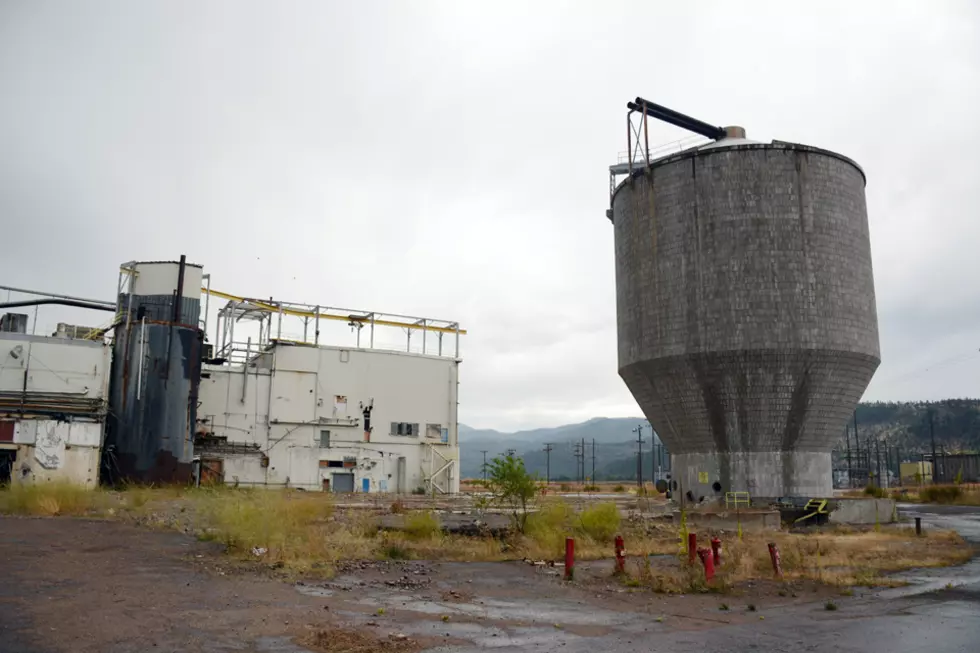
EPA agrees to quarterly groundwater sampling at Smurfit
Laura Lundquist
(Missoula Current) For those concerned about the Smurfit Stone mill site, sampling in 2024 should provide a better picture of the extent of contamination, thanks to a promise from the U.S. Environmental Protection Agency.
In a call to Missoula County Commissioner Josh Slotnik two weeks ago, EPA Regional Administrator KC Becker committed her agency to meeting the county’s request for quarterly groundwater sampling in all wells on the Smurfit Stone mill site, according to Missoula County Environmental health manager Elena Evans.
“This is like our New Year’s hopes and aspirations,” Evans said. “The workgroup meeting (on Dec. 13) was going to be pretty technical. So Commissioner (Josh) Slotnik called KC Becker prior to it, just to check in. She called him back the day after the meeting to say the EPA was committed to following through on that. I think it bodes well for getting us to where we want to go in the future.”
The EPA has sampled groundwater over the past five years, but technicians collected single samples usually in the spring or summer from existing wells dotting the Smurfit Stone site.
Missoula County and the Frenchtown Smurfit Stone Community Advisory Group have repeatedly asked the EPA to collect samples on a quarterly schedule, because they’re worried the EPA is missing critical information that it needs to do a thorough cleanup. Groundwater flows vary throughout the seasons, and higher volumes in the spring and early summer can dilute existing contamination that might be more evident at lower levels that exist during the winter.
In March, EPA employees participated in two extensive meetings with Missoula County employees, members of the Montana trustees, and representatives of the organizations responsible for paying for sampling and cleanup to agree on what data was still needed and what objectives they would achieve. They came away with an agreement to address the groundwater, sludge and wastewater areas, leaving the Clark Fork River and its fish and wildlife for later.
In May, EPA project manager Allie Archer told the county commissioners the Data Quality Objectives document was finished and had been sent to the landowner, called “the potentially responsible parties,” for their approval or suggested modifications. The potentially responsible parties have to pay for the work, but Archer assured the commissioners that the work would start in 2024 even if the parties balked at paying for it.
But in October, Archer told the Frenchtown Smurfit Stone Community Advisory Group that the EPA had already done the groundwater sampling between Sept. 18 through Oct. 3 without getting input from the advisory group. Archer said there hadn’t been time to get feedback, so “the EPA used data we collected, our historical knowledge, to pick wells that met a justifiable reason for sampling.”
That disappointed the advisory group, which noted that a number of wells hadn’t been sampled. Archer told the group then that the EPA would do more sampling in 2024 but wasn’t committed to quarterly sampling. However, Archer said in October that would be discussed in the Dec. 13 meeting.
Now, that request has been granted, although the potentially responsible parties have yet to give their approval. But this time, that won’t hold things up.
During the Dec. 13 technical working group meeting, state agencies, including the Department of Environmental Quality and Natural Resources Damage Program, committed their resources to making things happen, Evans said.
“So, even if it’s hard for the EPA to fulfill the quarterly sampling through the (potentially responsible parties), the commitment is still there from the state agencies for contracting. It’s an option that the EPA is willing to take up, so that bypasses some of the time the EPA would need to pursue it,” Evans said Tuesday. “I want to give EPA a lot of credit, because they’re so stuck in that “Superfund snake” (process), and this is a little outside of their normal process. They have to create a new path of action, so we’re grateful to them for stepping up to make it happen. I think we’ll see the fruit of that effort as we move into 2024.”
The agreement is for two years of groundwater sampling. Evans anticipates that the EPA will conduct the first round in January, collecting groundwater samples from all existing wells on the site. That’s important, because very little sampling has been done during the first quarter when the lowest surface and groundwater flows occur.
“The quarterly sampling is going to take the most time. We’re trying to all get together to talk about the next pieces, which involve additional wells, soil sampling and leachate collectors under the dumps. The contracting for those and the work plan for those will be a little more complicated. But I’m hoping we’ll get all that going this summer,” Evans said. “None of this would have happened without the dedication of the Frenchtown Smurfit CAG. It’s standing on the shoulders of their commitment and hard work that we got to this point.”
The next meeting of the Frenchtown Smurfit Stone Community Advisory Group is Feb. 1 at 6:00 p.m. in the Frenchtown Fire Station.
Contact reporter Laura Lundquist at lundquist@missoulacurrent.com.
